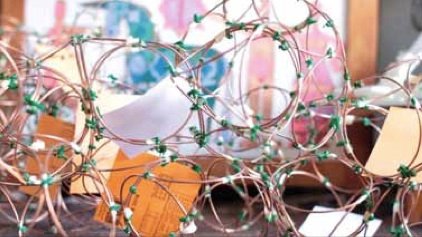Vogue Patronage: Italy’s Fashion Houses are Emerging as Contemporary Art Patrons
Besides their worldwide renown for setting the trends of cutting-edge styles, Italian fashion designers have now established themselves as the modern patrons of contemporary art, being the most active supporters of avant-garde art projects and drawing on works of art for inspiration. In the last few years, many initiatives launched by top luxury brands of fashion have contributed to introduce a new generation of Italian artists to the international scene.
It is enough to recall, among the others, the Furla Art Award, set up in 2000 with the aim of supporting young, talented artists by giving them the opportunity to showcase their work. The artists selected in each edition are called to express themselves in a multiplicity of languages, from videos to photography, painting, installations, performances and sculpture. In addition to the opportunity to study and work abroad in an artist’s residency program, the winner of the competition – the latest being Matteo Rubbi with his “Viaggio in Italia ” – is invited to create a work funded by Fondazione Furla and destined for public exhibition thanks to a special agreement with MAMbo, the Museum of Modern Art of Bologna. The winning project is also given the opportunity to premiere at the Fondazione Querini Stampalia in Venice on the occasion of the Biennale of Visual Arts.
The role held by wealthy families in the Renaissance now seems to be played by an increasing number of foundations established by top fashion houses, such as Cartier, Prada, Fendi and Trussardi, which today sponsor important public works of art. Fondazione Prada, for instance, is actively involved in the renovation of the Venetian Baroque palazzo Ca’ Corner della Regina, which is set to become an important new landmark in Venice’s cultural landscape.
The relationship between art and fashion is however one of mutual exchange, because, while fashion brands help new artists emerge, artists actively contribute to the designers’ creations, and often become part of their staggering and catchy advertisements. That is the case of Ottonella Mocellin, a finalist for the 2002 Furla Art Award, who has recently been selected as the protagonist of Furla’s 2011 Spring/Summer collection launch campaign, which portrays a traveling woman on a journey towards independence.
The phenomenon of artists lending their name and talent to fashion is not new: during the 1920s, Salvador Dalí created dresses for Coco Chanel and Elsa Schiaparelli; in the 1930s, futurist painter Lucio Venna drafted sketches for the advertisement of Ferragamo’s shoes. Gianni Versace used to commission works of art from artists such as Alighiero Boetti and Roy Liechtenstein for the launches of his collections. More recently, celebrated Italian artist Michelangelo Pistoletto has signed a limited-edition collection of Furla’s shopping bags in support of “Love Difference”, an association aimed at encouraging the cohabitation between different cultures in the Mediterranean countries, thus acknowledging the role of art in the production of objects undertaking social responsibilities.
Another interesting side of the fruitful relationship between fashion and art has recently been explored by the Brussels-based Rotor collective. In their “Ex limbo” project, exhibited at Fondazione Prada in Milan from April to June 2011, they used the architectural and scenic elements of Prada’s fashion shows to bring forth the “remnants” of a world that, after a moment of meaningful splendor, is discarded and left in a state of limbo, inviting the viewers to cast a second look at the “forgotten”. The result is a labyrinth of elements that bear witness, simultaneously, to the amount of work involved in producing each fashion show, and to the silent existence of its materialization beyond the event.
The connection between artists and fashion brands is bound to become even tighter in the next few years, contributing to enhance the industrialization of both sectors. A new generation of artists will therefore be facing new challenges and new opportunities for growth and visibility. After all, as Sir Peter Ustinov once said, “if Botticelli were alive today, he’d be working for Vogue”.
